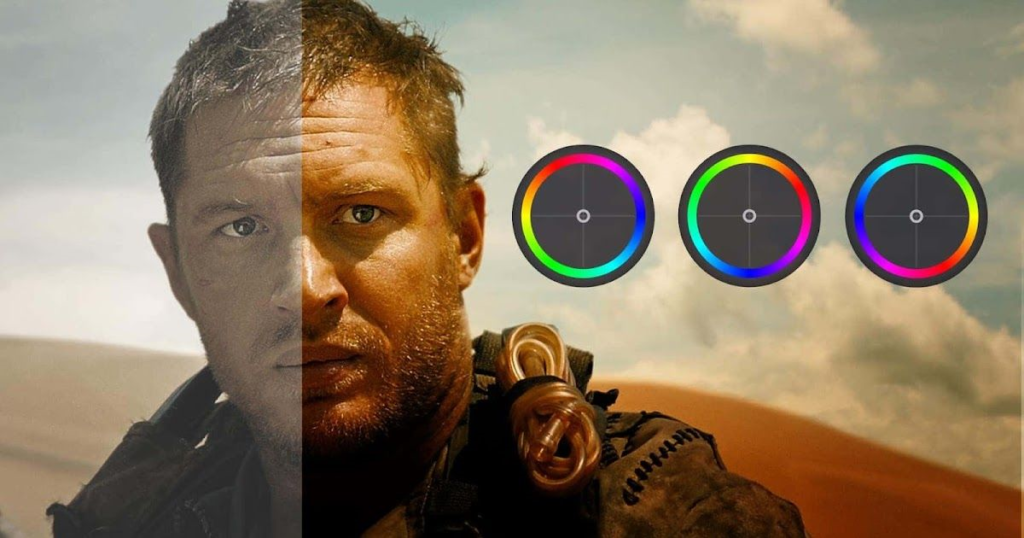Color theory is a fundamental aspect of game art, playing a crucial role in the visual experience of a game. The concept is rooted in the understanding and application of colors to create aesthetically pleasing and emotionally impactful imagery. For game developers and artists, mastering color theory is not just about making a game look good.
It’s about creating an atmosphere, guiding the player’s emotions, and enhancing the overall gameplay experience. The application of color theory can vary widely, from choosing the right color palette for characters and environments to understanding how colors can influence player behavior and perception.
What is the Color Theory in Game Art?
The color theory in game art refers to the principles and guidelines that artists use to create harmonious color combinations that convey the desired mood, atmosphere, and emotional impact in a game. It involves the study of color relationships, such as complementary, analogous, and triadic colors, and how they interact with one another.
The color wheel, a fundamental tool in color theory, helps artists to visualize these relationships and choose the best combinations for their designs. The use of warm and cool colors, contrast, and saturation are also essential components of color theory, each contributing to the overall visual experience of the game.
How Important is Color Theory in Art?

The importance of color theory in art, including game art, cannot be overstated. It is the foundation upon which artists build their visual compositions, ensuring that the colors they choose work together harmoniously to create a cohesive and aesthetically pleasing result. Color theory helps artists convey emotions, direct attention, and establish the overall tone of their work.
In game art, where the visual experience is a key component of the player’s immersion, understanding and applying color theory is essential for creating an engaging and memorable game. The correct use of color can make the difference between a game that feels flat and one that is vibrant and alive.
Why Are Colors Important for a Game?
The colors used in a game are crucial for several reasons. Firstly, they help to create a visual identity for the game, making it instantly recognizable. Secondly, colors can set the tone and mood of a game, whether it’s a dark and gritty atmosphere for a horror game or a bright and cheerful palette for a platformer.
Additionally, colors can be used to guide the player’s attention, highlight important elements, and provide visual cues for gameplay mechanics. The psychological impact of colors is also significant, as different colors can evoke different emotions and responses from players, influencing their behavior and decisions within the game.
What is the Most Important Concept of Color Theory?
The most important concept of color theory is understanding the relationships between colors and how they can be used to create harmony and balance in a composition. This involves using the color wheel to identify complementary colors, which are opposite each other on the wheel, and analogous colors, which are next to each other.
These relationships help artists create color schemes that are visually appealing and convey the desired mood or atmosphere. Another key concept is the use of contrast, which involves using colors that stand out against each other to draw attention to specific elements or create a sense of depth and dimension in the artwork.
The Role of Color Theory in Game Design

The role of color theory in game design extends beyond just the visual aspects of a game. It is also used to enhance gameplay mechanics and improve the overall user experience. For example, colors can be used to indicate the status of objects or characters, such as red for danger or green for health.
They can also be used to differentiate between different game elements, making it easier for players to understand and interact with the game world. The use of color in UI design is also critical, as it helps to create a clear and intuitive interface that is easy for players to navigate.
How Color Theory Enhances Player Immersion
Color theory is a powerful tool for enhancing player immersion in a game. By using the right colors, game developers can create an environment that feels real and believable, drawing players into the game world and making them feel like they are a part of it. The use of color can also evoke specific emotions and responses from players, helping to create a deeper connection between the player and the game.
For example, the use of warm colors can create a sense of comfort and safety, while cool colors can create a sense of distance and isolation. The strategic use of color can make a game more engaging and immersive, keeping players invested in the experience.
The Psychological Impact of Color in Games
The psychological impact of color in games is a critical aspect of game design. Different colors can evoke different emotions and responses from players, influencing their behavior and decisions within the game. For example, red is often associated with danger and urgency, while blue is associated with calmness and stability.
Understanding how colors affect the human psyche allows game developers to create more effective and emotionally engaging experiences. The use of color can also be used to reinforce the narrative and themes of a game, making the story more impactful and memorable for players.
The Use of Color to Guide Player Behavior

Color is a powerful tool for guiding player behavior in games. By using specific colors to highlight important elements or areas of interest, game developers can direct the player’s attention and influence their actions. For example, using a bright color to highlight a door or pathway can signal to the player that this is the correct way to proceed.
Similarly, using contrasting colors can help to differentiate between interactive and non-interactive objects, making it easier for players to understand what they can and cannot interact with in the game world. The use of color to guide player behavior is an essential aspect of game design, helping to create a more intuitive and enjoyable experience.
The Importance of Consistency in Color Use
Consistency in color use is critical for creating a cohesive and visually appealing game. Using a consistent color palette helps to create a unified visual identity for the game, making it easier for players to understand and navigate the game world. It also helps to reinforce the mood and tone of the game, creating a more immersive experience.
Inconsistent use of color can be distracting and confusing for players, breaking the immersion and making it harder for them to engage with the game. Consistency in color use is also important for accessibility, as it helps to ensure that all players, including those with color vision deficiencies, can enjoy the game.
The Role of Color in Character Design
Color plays a significant role in character design, helping to define the personality and identity of a character. The colors chosen for a character’s design can convey a lot of information about their role in the game, their personality, and their backstory.
For example, a character dressed in dark colors might be seen as mysterious or villainous, while a character in bright colors might be seen as cheerful and friendly. The use of color in character design is also important for creating visual contrast between characters, making it easier for players to distinguish between different characters in the game.
The Use of Color in Environmental Design
Environmental design is another area where color theory is critical. The colors used in a game’s environment can set the tone and mood for the entire game, creating a sense of place and atmosphere.
For example, using warm colors in a sunset scene can create a feeling of warmth and serenity, while using cool colors in a nighttime scene can create a sense of calm and mystery. The use of color in environmental design can also be used to guide the player’s attention, highlight important areas, and create a sense of depth and dimension in the game world.
The Challenges of Applying Color Theory in Game Art
Applying color theory in game art can be challenging, as it requires a deep understanding of how colors work together and how they can be used to create the desired effect. One of the biggest challenges is choosing the right color palette for a game, as the colors used need to be consistent with the game’s theme, mood, and overall aesthetic.
Another challenge is ensuring that the colors used are accessible to all players, including those with color vision deficiencies. Game developers also need to consider the technical limitations of the platforms they are working on, as different devices and screens can display colors differently.
The Evolution of Color Theory in Game Art
Color theory in game art has evolved significantly over the years, with advancements in technology allowing for more complex and sophisticated use of color. In the early days of game development, the limited color palettes available on early gaming consoles meant that developers had to be creative with how they used color.
Today, with the advent of high-definition displays and advanced graphics technology, game developers have much more flexibility in their use of color. This has allowed for more realistic and immersive game environments, as well as more nuanced and subtle use of color to convey emotion and atmosphere.
The Future of Color Theory in Game Art
The future of color theory in game art is likely to see even more advancements as technology continues to evolve. With the rise of virtual reality and augmented reality, game developers will need to consider how colors will be perceived in these new and immersive environments.
The use of color in these technologies will need to be even more precise and intentional, as the impact of color on the player’s experience will be even more pronounced. Additionally, as games continue to become more global, game developers will need to consider how colors are perceived in different cultures and how they can be used to create universally appealing experiences.
Conclusion
The understanding and application of color theory are fundamental to game art, influencing everything from the visual appeal of a game to the emotional responses it elicits from players. By mastering color theory, game developers can create more immersive, engaging, and memorable gaming experiences that resonate with players on a deeper level.
As technology continues to evolve, the importance of color theory in game art will only continue to grow, making it an essential skill for anyone involved in game design and development.
Frequently Asked Questions.
1. What is color theory in game art?
- The color theory in game art refers to the principles and guidelines that artists use to create harmonious color combinations that convey the desired mood, atmosphere, and emotional impact in a game.
2. How important is color theory in game art?
- The color theory is extremely important in game art as it helps create visually appealing and emotionally engaging experiences for players, enhancing both the aesthetic and functional aspects of the game.
3. Why are colors important for a game?
- The colors used in a game are crucial for creating a visual identity, setting the tone and mood, guiding player behavior, and evoking specific emotions, all of which contribute to the overall gameplay experience.
4. What is the most important concept of color theory in game art?
- The most important concept of color theory in game art is understanding the relationships between colors and how they can be used to create harmony, balance, and contrast in a composition.

Welcome to our gaming website Mike Daniel, your dedicated guide is here to bring you the latest insights and updates from the world of gaming.











